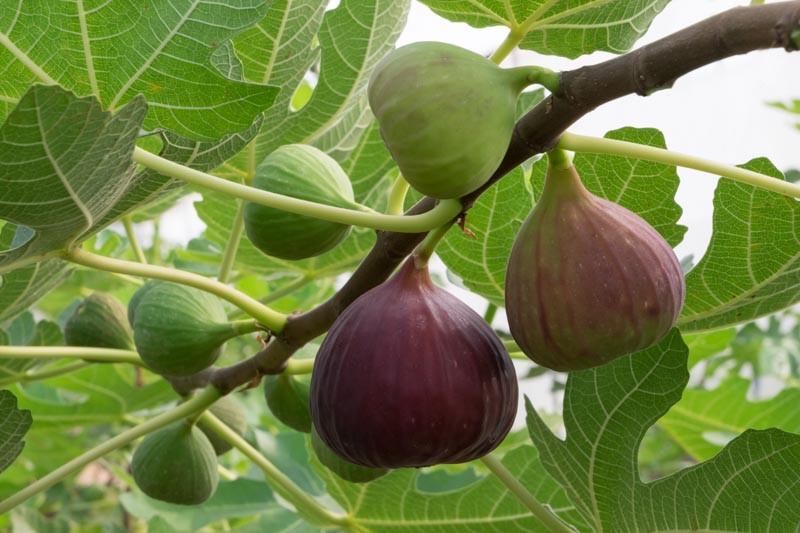Ficus (Fig)
Ficus, a genus encompassing around 850 species, is one of the most intriguing and diverse groups of plants in the botanical world, with a range of habits, hardiness levels, popular species, uses, and benefits.
Habit: The genus includes a variety of growth forms: woody trees, shrubs, vines, epiphytes (plants that grow on other plants but are not parasitic), and hemiepiphytes (plants that start as epiphytes but eventually root in the ground).
Hardiness: Ficus species vary in their hardiness. While most are tropical plants and thrive in USDA zones 10-12, some, like the Common Fig can tolerate temperate climates and are hardy to USDA zones 6-10.
Popular Species: Ficus carica (Common Fig), cherished for its edible figs, Ficus elastica (Rubber Tree), popular as an indoor plant for its large, glossy leaves, Ficus benjamina (Weeping Fig), another favorite houseplant with graceful, drooping branches, or Ficus lyrata (Fiddle-Leaf Fig) prized for its large, violin-shaped leaves.
Uses: Fig trees have various uses, from the edible figs of F. carica to the ornamental appeal of F. benjamina and F. elastic. They are also used in landscaping, bonsai, and in traditional medicine.
Benefits: Ficus trees are excellent air purifiers, removing toxins such as formaldehyde from indoor air. They provide ecological benefits like offering shade, reducing heat in urban areas, and supporting wildlife. The fruits of some species are nutritious and a source of food for humans and wildlife alike.
Ecological Significance: Many Ficus species play a crucial role in their ecosystems. They are keystone species in rainforests, providing food for a myriad of animals. The fruits of fig trees are a key food resource for wildlife, supporting birds, mammals, and insects.
Symbol of Peace and Unity: Ficus trees often symbolize peace and unity, as their wide canopies and long life make them a gathering place in various cultures.

